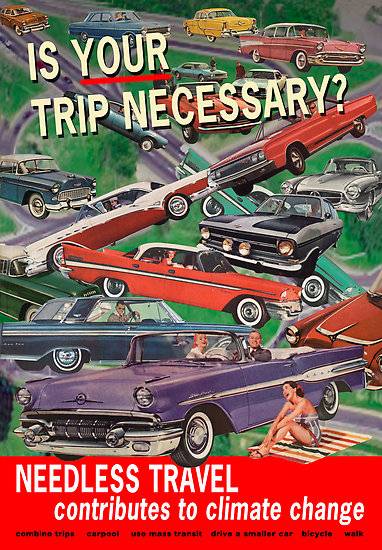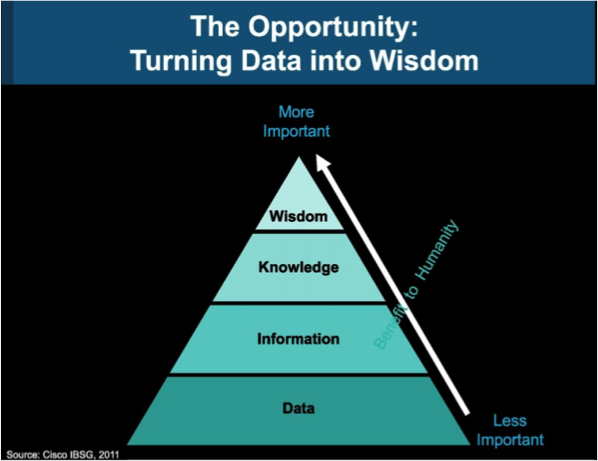 By Paul L. Jones, CPA, LEED Green Associate,
By Paul L. Jones, CPA, LEED Green Associate,
Principal, Emerald Skyline Corporation
 Commercial properties consume approximately 20% of the total energy used by the United States. We also know that commercial buildings consume a large portion of water, produce greenhouse gas emissions and generate significant waste. Further, we know that building owners and managers will seek to reduce energy and water consumption as well as greenhouse gas emissions and waste that is taken to a landfill (or the ocean) in order to save on operating expenses and improve the marketability of their property. But, we also know, owners and managers are budget conscious and want to time replacements with the deterioration or functional obsolescence of their systems and equipment.
Commercial properties consume approximately 20% of the total energy used by the United States. We also know that commercial buildings consume a large portion of water, produce greenhouse gas emissions and generate significant waste. Further, we know that building owners and managers will seek to reduce energy and water consumption as well as greenhouse gas emissions and waste that is taken to a landfill (or the ocean) in order to save on operating expenses and improve the marketability of their property. But, we also know, owners and managers are budget conscious and want to time replacements with the deterioration or functional obsolescence of their systems and equipment.
So, what can an owner, manager or tenant do?
Good news. We have done the research for you and assembled a host of ideas and tips on free or low cost ways to start you on the Path to Sustainable Benefits (Please note that all figures and percentages are approximate and based on published sources; your results may vary):
Reduce, reuse and recycle
- Implement a recycling program (be sure to check local recycling and waste reduction guidelines for materials that are eligible to recycle);
- Establish a location in the building to recycle used batteries, toner cartridges and miscellaneous hazardous products and partner with a charitable organization to donate used toner cartridges, batteries and other products,
- Set up a cell phone recycling drive (contact ReCellular) or partner with a charitable organization to donate used cell phones.
- Recycle old or unused furniture whenever
- Post signs in production rooms, mail rooms and kitchens as a reminder to reduce, reuse and recycle and the 3 Include information in new tenant welcome packages.
- Purchase refurbished or environmentally-friendly new furniture.
- Source locally-manufactured/produced products to lower transportation and delivery costs.
- Encourage and educate building management personnel and tenants on how they can improve their recycling efforts including:
- Provide individual paper recycle bins or cardboard boxes at each desk,
- Provide recycle bins at each copier/printer/fax (more bins than trash cans increases use),
- Reuse shipping boxes in the mailroom and use shredded waste paper as packing material,
- Switch to refillable pens and pencils made from recycled materials,
- Use envelopes a second time with a new address label,
- Encourage staff who cannot recycle certain items at home to bring these to the office for recycling,
- Establish a common space for reusable office products,
- Establish a policy that employees shut down their computers when leaving for the day (“standby” draws power when not in use),
- Turn off devices besides fax machines that are not in use afterhours before leaving the office,
- Utilize remanufactured/recycled toner cartridges for printers and fax machines,
- Save paper with the blank side to b used for scrap/scratch/drafts (reuse) before recycling,
- Encourage printing on used paper if one side remains clean (use old reports from exiting or outdated hardcopy files to print new data for updated files),
- Use document scanning and email technology to reduce printing of documents,
- Encourage employees to read email and files without printing,
- Set up and use electronic filing rather than a paper filing system,
- Take the time to redirect undelivered mail with “no longer at this address” written on the envelope,
- Contact advertisers directly to quit sending unsolicited marketing and catalog products,
- Notify staff who receive unwanted mail to be removed from mailing lists by contacting Mail Reference Service, Direct Marketing Association, P.O. Box 3861, New York, NY 10163-3861,
- Use ceramic/glass dishware to reduce wasted paper, plastics and foam cups, and
- Discontinue the use of individually-bottled water.
- Use on-demand printing processes rather than push printing that requires bulk ordering of marketing materials (e.g. brochures).
Conserve Energy
- Benchmark energy and water consumption through ENERGY STAR® Portfolio Manager.
- Perform regular energy audits to identify opportunities for cost-effective energy reduction. Remember to perform midnight evaluations to make sure lighting and HVAC are not running when the building is unoccupied.
- Make sure a/c vents, heaters and radiators are unobstructed by office furniture.
- Understand your energy bills and consult your energy supplier(s) to understand the billing rates and any peak-time charges and how they be reduced or avoided.
- Adjust the thermostat to be one degree higher during the cooling season and one degree lower during the heating season;
- Reduce the thermostat in unoccupied rooms or in busy concourse spaces and corridors where people move quickly through anyway
- Set thermostats to energy-efficient heating/cooling levels during weekends and evenings,
- Inspect all thermostats semi-annually to ensure that they are working properly,
- Adopt on-demand HVAC,
- Ensure switches are labeled so tenants and staff are aware of switches that are relevant for use and won’t be switching on too many appliances or too much lighting.
- Leaving the lighting in vacant spaces off except during use and encourage tenants to turn off lights when departing a conference room or unused space (Better yet: install occupancy sensors (timers are another option) which ensures that even occupied spaces are lit when there is a person the room and off when vacant, further reducing energy consumption;
- Install solar shades to block heat.
- Switch to day cleaning so lights can be turned off at night rather than at 2:00 am when the cleaning crew is done.
- Establish a pro-active HVAC systems and building envelope maintenance programs. Something as simple as replacing worn door seals can cost around $100 per doo, but lead to thousands of dollars in annual savings;
- As lightbulbs are replaced, use LED bulbs to help reduce energy consumption;
- Install VFD (Variable Frequency Drive) on pumps and water features which minimizes energy use during low demand times;
- Vending machines carrying non-perishable items can be set on a timer or switched off during non-work hours (nights and weekends) when the building is closed.
- Power flushing your central heating system can reduce fuel wastage by a third as it can remove undesirable corrosion residues, replace aggressive water, quickly restoring circulation, efficiency, and increase the lifespan of your system.
- Institute a tenant energy awareness program – use your company newsletter and/or building announcements to keep tenants and their employees informed about energy management goals and how they can help.
- Provide tenants with energy saving tips
- Recommend that tenants keep the blinds in the office closed (or almost closed) during peak sun hours and especially on weekends,
- Recommend that building occupants avoid placing lamps near the thermostats in your space (heat generated by the light causes the HVAC to turn on when not needed to cool the entire office),
Conserve Water
27. Install aerators on faucets (especially in older buildings) to reduce the demand for hot water;
28. Put water heaters on a timer that shuts them off at night and on weekends and add water heater blankets,
29. Insure all hot water piping, including water return piping, is insulated which reduces the amount of time the user waits for hot water and ensures warmer water will be returned to the water plant.
30. Place cistern displacement devices in toilets to reduce flush volume.
31. Use dyes to check and fix toilet cistern leaks.
32. Use native or drought-tolerant plants and landscaping;
33. Use reclaimed water (through the use of rainwater harvesting tanks), irrigation sensors, timers and green products for landscaping, common area amenities and pest control.
34. Add a rain sensor designed to identify when precipitation is present and lock-out a controller so it does not run its program and irrigate when watering is unnecessary. After the rain event, the sensor automatically resets, allowing the controller to resume its schedule without losing any program information.
Indoor Environmental Quality
35. Use sustainable cleaning products and building materials for any tenant improvements or repairs;
36. Have cleaning crews use mircrofiber towels for cleaning rather than wasteful paper towels.
37. Replace bathroom paper products with recycled or post-consumer content paper.
38. Use high-efficiency HVAC filters and change them often.
39. When repainting an area, require the use of low VOC paint or paint that meets Green Seal 11 standards.
40. Paint work areas in lighter colors and use brighter surface design materials to maximize the effect of natural lighting.
41. Ensure remodeled include environmentally-friendly or recycled carpet.
42. Use a plant service to promote clean air and natural cooling.
43. Encourage tenants to position desks closer to natural light to reduce the onset of seasonal depression (aka SAD).
44. Provide incentives, such as free or preferred parking, for building occupants who carpool.
45. Create a message board (either digital or physical) where building occupants can sign-up and find carpool mates.
46. Provide preferred parking for building occupants who drive low emission, fuel-efficient vehicles.
47. Encourage the use of public transportation
48. Provide bicycle storage to encourage building occupants to ride their bikes to work.
49. Hold long-distance meetings via NetMeeting, Live-meeting or other services.
50. Install electronic vehicle chargers


 ans nearly 198,000 years to accumulate, and used that as the benchmark; the amount of human knowledge would take another 1,500 years to double. With the introduction of the printing press, the pace of growth in human knowledge started to accelerate with another doubling occurring in about 250 years. By 1900 (around 150 years), human knowledge had doubled again. By the end of World War II, knowledge was doubling every 25 years. At the time Critical Path was published, Fuller estimated that human knowledge was doubling every 18 months. Now, Human knowledge is estimated to double every 13 months. With the internet and other advances in human communication and data storage, IBM predicts that human knowledge is soon to double every 12 hours.
ans nearly 198,000 years to accumulate, and used that as the benchmark; the amount of human knowledge would take another 1,500 years to double. With the introduction of the printing press, the pace of growth in human knowledge started to accelerate with another doubling occurring in about 250 years. By 1900 (around 150 years), human knowledge had doubled again. By the end of World War II, knowledge was doubling every 25 years. At the time Critical Path was published, Fuller estimated that human knowledge was doubling every 18 months. Now, Human knowledge is estimated to double every 13 months. With the internet and other advances in human communication and data storage, IBM predicts that human knowledge is soon to double every 12 hours.

